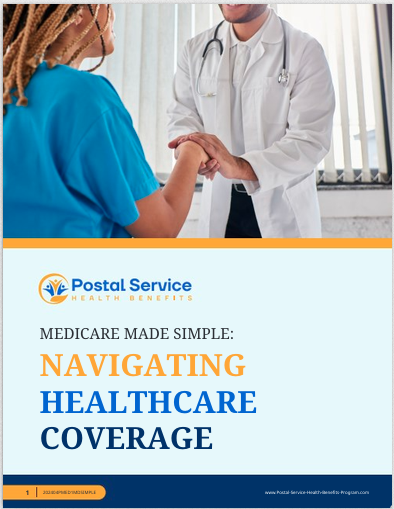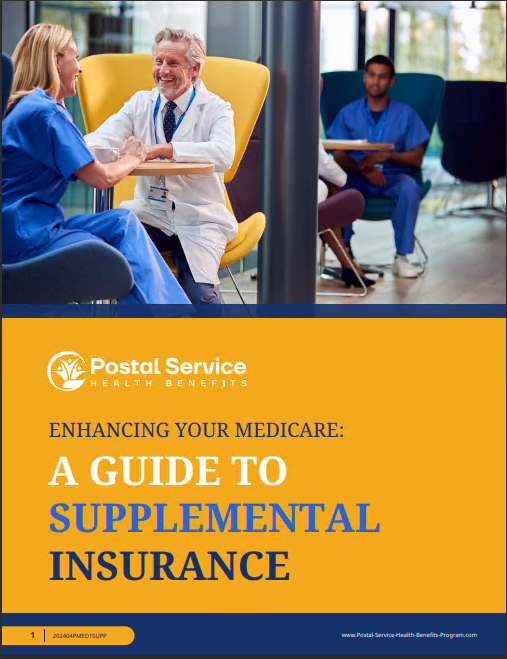Key Takeaways
- The Postal Service Health Benefits (PSHB) Program is a new initiative aimed at providing enhanced health benefits for USPS employees and retirees.
- This program is set to replace the previous health coverage under the Federal Employees Health Benefits (FEHB) program, bringing in notable changes for USPS workers and their families.
The Postal Service Health Benefits (PSHB) Program: What’s the Buzz About This New Health Plan?
The United States Postal Service (USPS) has announced a significant shift in how its employees and retirees will receive health coverage with the launch of the Postal Service Health Benefits (PSHB) program. This new plan, which is expected to begin in 2025, promises to bring tailored benefits to USPS workers and retirees while replacing the existing Federal Employees Health Benefits (FEHB) program. With changes on the horizon, USPS employees are keen to understand how the PSHB will impact them and their families. Here’s what you need to know about this upcoming health benefits program.
Why the Switch to PSHB?
The PSHB program was created as part of broader efforts to reform the USPS and improve its long-term sustainability. One of the key reasons for the shift from FEHB to PSHB is the need to better address the unique healthcare needs of postal workers and retirees. The new program is designed to offer more tailored benefits that align with the specific risks, working conditions, and needs of USPS employees.
Another critical factor is cost efficiency. By offering a USPS-specific plan, the goal is to reduce overall healthcare costs for both employees and the Postal Service itself, all while ensuring quality care and benefits for current and retired workers.
Who Will Be Affected by the PSHB Program?
The PSHB program will directly impact all active USPS employees, retirees, and their eligible family members. If you are currently enrolled in the FEHB program, you will be transitioned to the PSHB once it goes live in 2025. This means all postal employees and retirees will need to familiarize themselves with the new system, the benefits it offers, and how it compares to the current FEHB plans they are accustomed to.
However, unlike the FEHB, the PSHB is only available to USPS workers and retirees. This exclusivity aims to ensure that the benefits provided under the program are specifically designed to meet the healthcare needs of this workforce.
What Will Happen to FEHB Coverage?
One of the biggest questions for USPS employees is how the transition from FEHB to PSHB will unfold. Will there be disruptions in care? The good news is that the transition is being carefully managed to ensure there is no gap in coverage. The PSHB is scheduled to replace the FEHB program for postal employees in 2025, and there will be a smooth handover process to prevent any service disruptions.
Retirees currently enrolled in FEHB will also be transitioned to PSHB. However, the USPS and the Office of Personnel Management (OPM) are working together to ensure retirees continue receiving their benefits without any issues.
What Benefits Will the PSHB Offer?
While the exact details of the benefits packages under PSHB are still being finalized, it’s expected that the PSHB program will offer health coverage similar to that of the FEHB but more tailored to USPS workers’ needs. This means you can expect coverage for doctor visits, prescription medications, hospital stays, and preventive care.
The new plan will likely include options similar to those offered by FEHB, including Health Maintenance Organizations (HMOs) and Preferred Provider Organizations (PPOs). However, some aspects may differ to better serve the postal workforce and retirees. USPS employees should expect communication about available plan options before the program launch, so they can choose a plan that works best for them.
How Will PSHB Affect Retirees?
Retirees are understandably concerned about how the PSHB program will impact their healthcare coverage, especially those who have relied on FEHB for years. The PSHB program will cover USPS retirees, but there are some notable changes on the horizon. One major change is that all Medicare-eligible retirees will be required to enroll in Medicare Part B to receive full benefits under the PSHB program. This requirement is a key part of the program’s design, as it aims to better coordinate federal healthcare coverage with Medicare, thus reducing overall costs for USPS retirees.
For those retirees who are not eligible for Medicare, the PSHB will offer coverage similar to what FEHB currently provides. The transition is expected to be as seamless as possible, and retirees will have opportunities to review their options before the new program takes effect.
The Role of Medicare in the PSHB Program
Medicare will play a critical role in the PSHB program, especially for retirees. Under the new system, Medicare-eligible retirees will need to enroll in Medicare Part B to receive their full PSHB benefits. This mandatory enrollment is designed to help lower healthcare costs for both USPS and retirees, as Medicare will cover a portion of the medical expenses, reducing the burden on PSHB.
Retirees who are already enrolled in Medicare Part B should experience little change in their coverage. Those who have not yet enrolled will need to do so before they can fully benefit from the PSHB program.
How to Prepare for the Transition
Although the PSHB program is not scheduled to start until 2025, USPS employees and retirees should begin preparing for the transition now. Understanding the key differences between FEHB and PSHB, as well as how Medicare plays a role in the new program, is essential.
One of the best steps you can take is to stay informed. USPS and OPM will provide updates as the program launch approaches, and you should review any materials sent to you to ensure you fully understand your options under the PSHB. This includes familiarizing yourself with Medicare Part B if you are approaching retirement or already retired, as it will be a vital component of your healthcare coverage under the PSHB program.
Additionally, retirees should review their Medicare enrollment status and ensure they are prepared to sign up for Medicare Part B if they haven’t already. Active USPS workers nearing retirement may also want to explore their Medicare options to ensure a smooth transition when the PSHB program goes live.
What Happens If You Don’t Enroll in Medicare Part B?
One of the most significant changes under the PSHB program is the requirement for Medicare-eligible retirees to enroll in Medicare Part B. If you choose not to enroll in Medicare Part B, you could face higher out-of-pocket costs under the PSHB plan. Since Medicare will cover some of the healthcare expenses under the new program, failing to enroll means you would be responsible for those costs out of pocket.
To avoid any unexpected expenses, it’s crucial to understand the importance of enrolling in Medicare Part B. If you are unsure about how to enroll or what it entails, the USPS and OPM will offer resources to guide you through the process.
Keeping Your Family Covered
For USPS employees and retirees with dependents, it’s essential to understand how the PSHB program will affect your family’s health coverage. Similar to the FEHB, the PSHB program is expected to offer family coverage options, allowing you to cover your spouse and eligible dependents under the same plan. However, the plan details may differ, so it’s important to review the available options carefully once they are announced.
What to Expect Moving Forward
The Postal Service Health Benefits program represents a significant change in how USPS employees and retirees receive their healthcare coverage. While change can be intimidating, the USPS is committed to making the transition as smooth as possible for both current employees and retirees. With PSHB, postal workers and retirees can expect a program designed specifically for their needs, with the added benefit of coordination with Medicare for retirees.
As the program launch approaches, USPS workers and retirees should expect ongoing communication from USPS and OPM about the upcoming changes. These communications will offer details about plan options, enrollment requirements, and how to navigate the transition from FEHB to PSHB.
Preparing for the PSHB: Stay Informed
With the transition to the PSHB program just around the corner, it’s more important than ever for USPS workers and retirees to stay informed about their healthcare options. By keeping up with updates and reviewing the materials provided by USPS and OPM, you can ensure that you and your family remain covered and prepared for the future.







